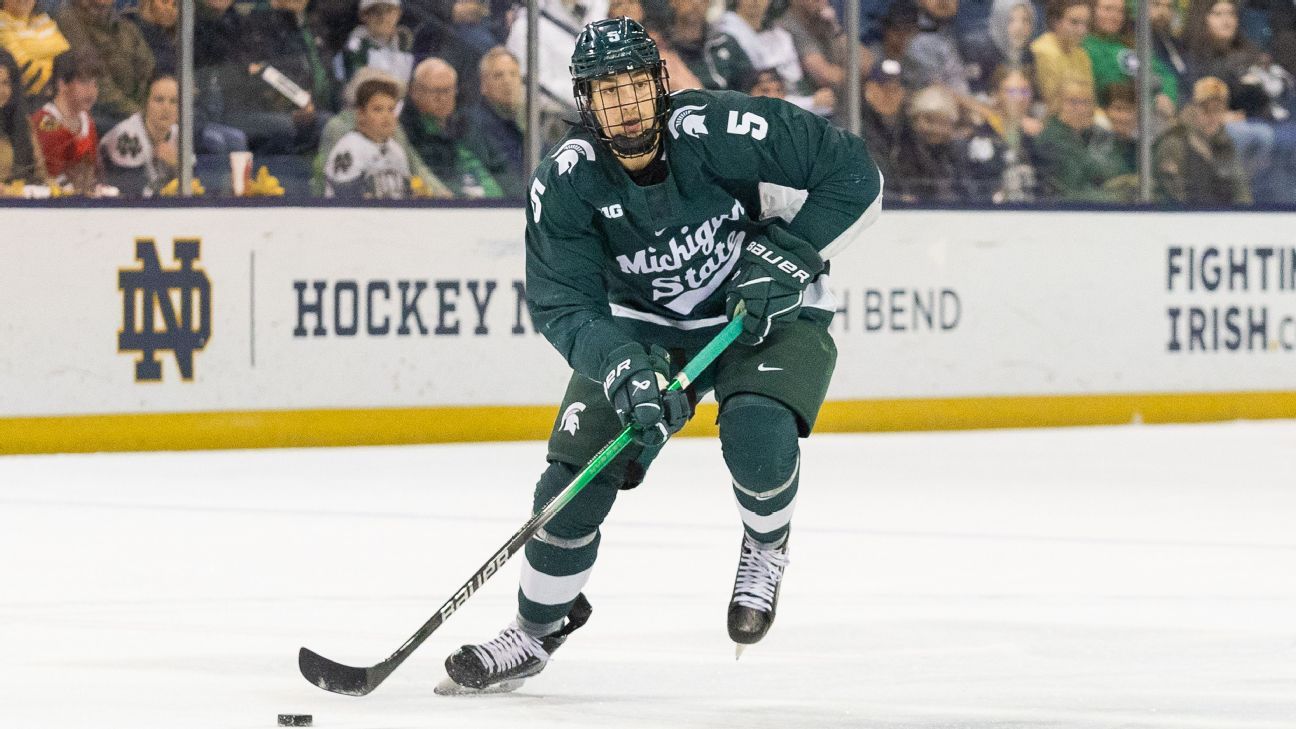The NHL season is coming to an end, with the playoffs kicking off later this month. With the postseason on the horizon, teams on the outside looking in will turn their attention to the NCAA tournament, CHL playoffs and the under-18 IIHF world championships in Finland. Rebuilding teams will focus on interviewing draft-eligible players, scrutinizing their play and building their list for the draft in June.
The trade deadline saw multiple first-round picks swapped, and makes for an intriguing mock draft exercise. Teams with more first-round picks are more likely to take swings on higher-risk players. That is, they are less risk-averse because they have more than one first-rounder; there is pressure to hit on your first-round pick when you only get one. Furthermore, teams are more likely to go off the board to get “their guy” when they have multiple selections. In recent drafts, Arizona did that with Maveric Lamoureux, New Jersey with Shakir Mukhamadullin, Ottawa with Jacob Bernard-Docker and Philadelphia with Jay O’Brien.
This is something that could be a trend in the 2024 draft. After Macklin Celebrini, there isn’t a consensus. Some teams like Ivan Demidov and Anton Silayev, while others are not prepared to use a top-5 pick on a Russian, similar to how Matvei Michkov fell to No. 7 in 2023. Cole Eiserman and Cayden Lindstrom are polarizing for different reasons, and they could go anywhere from fourth to tenth.
Once you are outside of the top 10, things get very murky and lists are all over the place. One team may have a player 11th, while another may have the same player 25th. Depending on team value and if GMs allow need to supersede “best player available,” there could be some eyebrow-raising selections made in June.
The mock draft is the opposite of the rankings. In this exercise, the model serves as a guideline, but the mock is based off what is more likely to happen, who teams are interested in and how the draft could shake out. Because of different team philosophies, never has a draft ranking been completely accurate. Mock drafts tend to be a better reflection of NHL lists because you’re accounting for off-ice factors, interest level, fit with organization and timelines. Outside of the first pick, the options are vast, and no one seems to have a firm grasp on what will happen just yet.
Using the inverse of the standings by points percentage on March 29 (and without a lottery process), let’s mock up the 2024 draft.
Read more: Top 32 prospects
Key prospects in the NCAA tournament

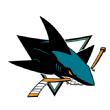
Macklin Celebrini, F, Boston University (NCAA)
This is a slam dunk no-doubter. There will be zero intrigue in June for who goes first overall. Celebrini has teams excited, and it isn’t difficult to understand why. He is a franchise-altering player who is going to have an immediate impact. He has every tool that a franchise center needs to succeed at the NHL level. He makes an impact in all three zones, drives play for his team and consistently attacks the dangerous areas on the ice with the puck.
Without the puck, Celebrini gets to open spaces, presents his stick and is a threat to score whenever he has the puck. He’s good in transition and uses his agility and puck skills to create rush chances. Celebrini’s puck protection and ability to play through contact stands out, because it makes him a versatile offensive weapon who can play in a transition/speed system, as well as a heavier, cycle-driven offensive scheme. He’s the best player in this draft and is expected to be an impactful player at the top of the lineup.

Artyom Levshunov, D, Michigan State University (NCAA)
Levshunov took a different path than other European-born players, and it has paid dividends. The Belarusian is the consensus best defender in the draft class, playing against older players in NCAA. Chicago has a penchant for taking NCAA players, and Levshunov is a great fit for the franchise. Connor Bedard is the franchise cornerstone, but this pick adds a right-shot defenseman who physically imposes himself on the game and dictates the play offensively.
He has developed at light speed, leading scouts to believe that he could be an impactful two-way defenseman at the NHL level. He makes a good first pass, finds shooting lanes and is a dominant force. Defensively, he’s quite raw but shows a ton of upside with his physical tools, excellent skating ability and puck battle success rate in the defensive zone. In the right development environment, Levshunov could be a top-pairing defenseman who dictates play from the back end.

Cayden Lindstrom, F, Medicine Hat (WHL)
One of the best prospect producers in the NHL adds another high-end forward. Lindstrom’s injury hurt his stock this season, but Anaheim has a history of taking the player with the highest ceiling and showing patience. The package of speed, size and position makes him an enticing prospect for many teams.
Lindstrom has been dominant at the junior level because he knows how to use his 6-foot-4 frame to protect pucks, win battles, and play through contact in the harder areas of the ice. His physical tools combined with his skating make him a nightmare to deal with off the rush, very similar to Quinton Byfield during his draft year. He backs defensemen off with his rush play and reads off his linemates well. He also understands when to physically impose himself to create a scoring chance or hold the puck and set up in the offensive zone. He will fit in nicely with Anaheim’s young center depth of Leo Carlsson, Mason McTavish and Nathan Gaucher.

Cole Eiserman, F, USNTDP
Eiserman is a hot-button player, and he may fall in the draft, but he has undeniable talent. Columbus is flush with prospects at every position, and should be taking the best player available. Given the turnover in the hockey operations department, it is expected that Columbus wants a player closer to home who can play in the near future. In Eiserman, the Blue Jackets get a highly talented winger to compliment a young crop of skilled forwards.
He’s headed to Boston University next season and will likely be a one-and-done player, though two seasons of college hockey would not be the worst for a player who needs to round out his game.
Eiserman is closing in on the goal-scoring record at the NTDP, and for much of the season, sacrificed a well-rounded game for offense. Scouts raised concerns that he would “disappear” when he wasn’t scoring, and his stock has declined because of it. There is no denying his ability to score, but he’ll need to continue to develop his instincts and decision-making in college to score at the NHL level.

Ivan Demidov, F, SKA-1946 (MHL)
The Coyotes have shown they are willing to be patient and allow their prospects to take nontraditional development paths (see: Artyom Duda). Demidov is arguably the second-best player available in the draft, and owns a complete package of offensive dynamism. His ability to completely take over games in the MHL this season did not go unnoticed. He drives offense in every sense of the word and projects as a top-line winger in the NHL. A combination of elite puck skill, brilliant hockey mind and a lethal release, Demidov has all the makings of star.
Arizona can be patient and wait for him, but he is the type of player who would mesh well with Logan Cooley and put fans in the seats of a new arena.

Sam Dickinson, D, London (OHL)
In Dickinson, the Senators get a 6-3 defenseman with an incredible toolbox, as scouts say. He’s very raw and will need more time in junior hockey, but there isn’t a better place to develop than London.
Ottawa’s new management group will have seen Dickinson many times over the years and know that they’re adding a potential top-four defenseman. Dickinson brings an attractive package that blends size, excellent mobility in transition and strong defensive play. His offensive game has developed over the course of the season, and his shot is noticeably improved. His reads in transition have also improved, and he has become an effective defender in transition, using his physical attributes and skating to interrupt plays on a nightly basis. In the defensive zone, he plays well positionally and capably defends one-on-one situations with confidence.
He has the potential to be a good two-way defender at the NHL level, capable of anchoring the second pair in Ottawa for years to come.

Berkly Catton, F, Spokane (WHL)
Catton is a slippery forward who possess excellent puck skill. He’s a thrill to watch in the offensive zone with his deception and ability to bait defenders into bad spots to create space. He’s an extraordinarily smart playmaker who is a step ahead of everyone else in every area of the game. Montreal is getting a shifty offensive player who darts in and out of areas, creates brilliance out of tight spaces and understands how to use his instincts and stick to win pucks off bigger players.
Not only is Montreal getting an offensive dynamo, but he has also been a fantastic penalty killer in the WHL this season. His elite instincts make him dangerous in all areas of the ice because he can strip the puck, get moving and turn defense into offense within seconds. While on the smaller side, Catton has many transferable skills that should see him thrive in a top-six role at the NHL level.
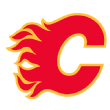
Anton Silayev, D, Torpedo (KHL)
Calgary needs to add some defensive prospects to the cupboard, and while I’m not convinced Silayev will be available at this spot, Calgary should be thrilled if he gets to them. The hulking 6-7 defender is playing meaningful minutes on one of the KHL’s better teams, which is extremely rare at age 17. He’s not expected to be an offensive defenseman in the NHL, but showing developable offensive attributes at his size raises eyebrows: Outside of Celebrini, he projects to have the highest ceiling in the draft.
He skates very well and shows quality agility in the way he defends in transition and moves around the offensive zone. Silayev seems to be scratching the surface of his potential with his talents and physical gifts. His ceiling at the NHL level is as an impactful top-pairing defenseman, if he can add strength without losing mobility.

Zayne Parekh, D, Saginaw (OHL)
Buffalo has one of the best prospect pools in the NHL and it gets another injection of tremendous talent here.
In Parekh, Buffalo gets the best offensive defenseman in the draft, breaking all kinds of OHL records over the past two seasons in Saginaw. Right-handed defensemen who are dynamic offensively are hard to find and aren’t available in trades. Adding Parekh to the group of Rasmus Dahlin, Owen Power and Bowen Byram gives them a right-handed defenseman who has been impactful at every level. He drives play offensively, moves well on his edges and manipulates defenders with ease.
His defensive game has improved but will need to continue to develop. At the NHL level, if he can use his footwork and engage physically more consistently, his offense will carry him. Buffalo is adding the future quarterback of its power play with this selection.

Zeev Buium, D, University of Denver (NCAA)
Seattle gets one of the best defensemen in college hockey this season in Buium. He has a 2005 birthday, meaning he is likely to leave college hockey after next season to turn pro. As draft-eligible, Buium was clearly one of USA’s top defensemen at the IIHF world junior championship, and has been a consistently impactful player at the NCAA level.
Buium is a left-handed defenseman who projects to be a top-four, well-rounded play-driver. His defensive development this year has turned heads, as he has learned to kill plays early in transition and move up the ice to create quick-strike offense. He’s not as physical as scouts would like, but he’s reliable in all three zones and spends most of his shifts in the offensive zone.

Tij Iginla, F, Kelowna (WHL)
With their second pick of the first round, the Sharks add a familiar hockey name to the family. In Iginla, the Sharks add one of the youngest players in the draft, who finished second in goal scoring among draft-eligible players in the WHL with 47 goals in 64 games. A volume shooter, Iginla gets pucks to the net like no one else in this draft class, averaging nearly five shots on goal per game.
Another player who has developed at breakneck pace this season, scouts speak glowingly about his shot, skating and puck skill with one scout opining that he may be the best one-on-one player in the class. He consistently works to get to good spots, drive the middle of the ice and has a foundation of skills that could lead him to be a top-line player in the NHL. The Sharks need to be patient with him, but his potential is sky-high with the package of raw tools.
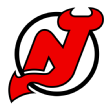
Carter Yakemchuk, D, Calgary (WHL)
The Devils add another solid prospect to their system with Yakemchuk, a 6-3 right-handed defenseman. One of the oldest players in the draft class, Yakemchuk has a highlight reel that’s a mile long featuring goals and big hits, but it comes with a lot of risk.
Similar to the other young defensemen in New Jersey, Yakemchuk needs to develop his decision-making in key situations. He’s prone to turnovers because he’s always trying to make positive things happen on the ice. Though as Devils GM Tom Fitzgerald says, “I’d rather tame a tiger than try to paint spots on a kitty cat.”
Yakemchuk is not only one of the highest-scoring defensemen in the draft, but he’s also one of the most penalized. He has a pro shot and a pro mean streak, which will complement New Jersey’s crop of young players very well.

Konsta Helenius, F, Tappara (Liiga)
The Islanders get a player projecting to be a second-line play-driver who makes everyone around him better. Helenius isn’t flashy, but he reads the play very well, manipulates defenders, finds open space and positively impacts the game over 200 feet.
Helenius fits perfectly with the hardworking identity the Isles have built and will be a difference-maker through his ability to create in the offensive zone. He never cheats for effort, and if he can improve his skating, there is legitimate upside to be a possession-driving center in a top-six role. Helenius is a perfect fit for the Islanders in every sense and will be a key piece of their future.

Liam Greentree, F, Windsor (OHL)
The Red Wings will have seen lots of Greentree, who captains the Windsor Spitfires of the OHL. With lots of defensive prospects in the system, Greentree fills a need as a high-motor player who is in the middle of everything. He projects as a middle-six winger at the NHL level and could pair perfectly with Marco Kasper’s style of play: A big winger who gets to the middle of the ice, wins puck battles and doesn’t shy away from the harder areas of the ice.
He isn’t as dynamic as some of the other players, but he has a pro shot and pro habits, which will allow him to be a Swiss Army knife type of player at the NHL level.

Ryder Ritchie, F, Prince Albert (WHL)
Another riser throughout the season, Ritchie fits the profile of a Wild prospect. A young player who excelled in the WHL by taking advantage of his deceptive skating and skill, in Ritchie the Wild get a playmaker who manipulates defenders well and changes gears to routinely beat defenders in transition. While his point totals didn’t develop at the speed of others, Ritchie is a high-ceiling player whose playmaking and skating give him an intriguing offensive toolkit.
He will need time to develop, but with the right steps, there is legitimate reason to believe he can be a top-six winger at the NHL level.

Adam Jiricek, D, HC Plzen (Czechia)
The Flyers land Jiricek, a solid right-handed defenseman from Czechia (brother David Jiricek was taken No. 6 by the Blue Jackets in 2022). There is risk to this pick given Jiricek’s injury history, but when he plays, he’s impactful and noticeable.
He’s an excellent skater with great agility, which should serve him well as a transition defender at the NHL level. He reads the play well and makes good decisions on when to jump up in the rush. Patience will be required, as his toolkit is raw and he’s likely a year behind in his development because of injury. But if he continues to round out his game in all areas, there is legitimate upside as a second-pairing defenseman who moves the needle.
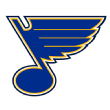
Michael Hage, F, Chicago (USHL)
St. Louis adds another high-end forward prospect to their cupboard with Hage, a dual-threat center with pro-caliber tools. Hage elevates every line he is on through his ability to create scoring opportunities for others and himself. He uses excellent skating and natural skill to impact the game, consistently. Scouts rave about his toolbox, which is complemented by his details and work ethic.
The Blues are getting a natural center with a high floor and the upside to be an impactful second-line player.

Igor Chernyshov, F, Dynamo Moscow (MHL)
Washington goes back to the Russian well and drafts another big, strong winger who is a nightmare to defend at the MHL level. He has played at the KHL level too this season, which is always a positive sign for a player in his draft year.
Chernyshov is a straightforward player who attacks defenders off the rush and has the skill and shot to be a serious problem. He needs to round out his game to become a more consistent threat, but if he can add some manipulation and deception with the puck, there is top-six upside.

Aron Kiviharju, D, HIFK (Liiga)
We’ve been talking about Kiviharju since he was 15, and the diminutive defenseman from Finland is one of the most polarizing prospects in this year’s class.
For a small defenseman, he manages the play very well through excellent skating in a high-end hockey sense. His footwork is particularly noticeable on the puck where he escapes sticky situations, walks the line and creates space for himself.
This is a boom-or-bust pick, but if he hits, there’s an impactful defenseman there. If we follow the pattern, Vegas will use him in a trade at a future deadline to acquire a player who helps them sooner.

Michael Brandsegg-Nygard, F, Mora IK (HockeyAllsvenskan)
With their second pick of the first round, Chicago gets one of the most well-rounded forwards in the draft with Brandsegg-Nygard. He has a physical package that is pro-ready, and good habits, but lacks a dynamic attribute. Yet, he shoots the puck well, physically engages in the play and has pro details (stops on pucks, finishes checks, tracks back well).
He projects as a middle-six player who is a power-play shooting threat. Scouts love his playing style, and if he can continue to develop his puck protection and two-way game, he’ll be a reliable middle-of-the-lineup player for a long time.

Emil Hemming, F, TPS (Liiga)
Another raw player here, but the Kings have shown their patience with young forwards such as Quinton Byfield, Arthur Kaliyev and Alex Laferriere. While Hemming is raw, he shows glimpses of high-end offensive instincts and skill. If he can learn to use his 6-1, 200-pound frame effectively, he has the shot, work rate, and skill to be a top-six winger at the NHL level.
There is inherent risk to drafting a player who needs this much development, but the Kings have time with Hemming and will love his work rate, offensive tools and physical package.

Beckett Sennecke, F, Oshawa (OHL)
The Predators add another high-ceiling forward to their prospect cupboards with Sennecke. A 6-2 right winger, Sennecke has puck skill to burn and could be an offensive powerhouse if he learns to play through contact and use his size more effectively.
He has shown a strong development curve this season, something of which scouts have taken note. There is a propensity to play “hero puck,” but when it works, it ends up on the highlight reel. He’s a high-risk, high-reward player, and if Nashville is patient, he has the tools to be a second-line, scoring winger.

Charlie Elick, D, Brandon (WHL)
In Elick, the Leaf are getting a 6-3, right-handed defenseman whose physical attributes and athletic ability excite scouts around the game. He boxes out the front of the net and uses his size and skating to effectively defend the rush. He also may be the hardest hitter in the entire draft class. His offensive rush and transition play have taken big steps this year, but he projects as a rangy, shutdown defenseman who is a nightmare to play against.
He’ll need to develop his instincts and continue to evolve his transition game, but Elick has an attractive package of functional size, mobility and a mean streak that’s a mile long.

Maxim Masse, F, Chicoutimi (QMJHL)
With its second pick of the first round, Montreal adds a French Canadian with size and a well-rounded package of offensive tools. Masse is a rarity in that he plays a near complete game, where he is relied upon in every situation from creating offense to killing penalties. His skating needs work, but his package of hockey sense, puck skill and willingness to compete in the hard areas of the ice gives him a legitimate chance to be a middle-six player at the NHL level.
He’ll need time to develop, but if he can add a step to his skating, he can be an all-situations player at the NHL level.

Terik Parascak, F, Prince George (WHL)
With their second pick in Round 1, the Ducks get the man who finished second in CHL scoring among draft-eligible players this season.
Parascak reads the play exceptionally well and it leads to him being a seamless fit with other offensive players. He’s consistently in the right place at the right time, creates space for himself and loses coverage to give his linemates easy targets to hit. He gets to the net front with ease and has finishing skill that compares well to Zach Hyman.
The Ducks have plenty of play-drivers, and Parascak will be a seamless fit with their young centers as a winger who plays exceptionally well off his linemates.

Sacha Boisvert, F, Muskegon (USHL)
The Flyers are lacking an elite prospect at center after trading Cutter Gauthier to Anaheim, but get a solid prospect here in Boisvert.
The 6-2 center is over a point per game in the USHL and is headed for North Dakota next season. He needs to fill out his frame to take advantage of his size, but he has a pro shot and above-average skating. With the right development and patience, the Flyers have a potential power forward up the middle who can dictate play and score from a variety of areas in the offensive zone.

Nikita Artamonov, F, Torpedo (KHL)
He may not get to Carolina, but if he does, he probably doesn’t get past them. Artamonov is a smaller winger who played 54 games in the KHL this season, a rare feat for a draft-eligible player. He’s an above-average skater who plays a patient game and has shown more of his scoring ability at the MHL level against his peers.
There’s a boom-or-bust element with a small winger who isn’t dynamic, but Artamonov strategizes well and has a demonstrated ability to fit in with various linemates and play styles. He’ll fit in nicely with a prospect pool that has many small but talented players.

Henry Mews, D, Ottawa (OHL)
The Senators won’t have to look far for their second selection of the first round in taking Mews.
The right-handed defenseman is a hot topic as scouts have varying opinions on him, likely due to his erratic play throughout the season. Mews has shown the ability to drive play from the back end, and will need to develop his decision-making and positional play to take advantage of his skating and offensive talent.
If he can dictate play on a more consistent basis, eliminate unnecessary risk-taking and improve his positional play, he projects nicely as a No. 4 or 5 defenseman.

Dean Letourneau, F, St. Andrew’s College (U18 AAA)
A 6-7 center who has a few years of college hockey to develop? That’ll do quite nicely for the Flames, who need some depth at center in the prospect cupboards.
Letourneau uses his size to overpower players at this level, and some players don’t even bother engaging with him. He’s raw in the sense that he doesn’t quite understand how to effectively use his physical package, but with an upcoming campaign in the USHL before heading to Boston College, Letourneau has a chance to be a true unicorn at the NHL level.
He’s the type of player who is a risk worth taking for a team with a second first-rounder, and if he hits, we’re talking about a guy who could be a real difference-maker.

Andrew Basha, F, Medicine Hat (WHL)
In Basha, the Avalanche get a reliable player who has pro-level details. He has demonstrated his ability to manufacture offense on his own without cheating. He has great puck skills and doesn’t get caught trying to do too much, making simple plays and using his linemates well. His short-burst attacks and ability to play off the puck mitigate his skating, which is good but will need to improve to have success at the NHL level.
He’s a few years away but has the talent to be a middle-six, two-way player.

Miguel Marques, F, Lethbridge (WHL)
The Stars have a knack for drafting high-end talent later in the first round and beyond, and it is no different here. Marques, a 5-10 winger, took a huge leap offensively this season, leading Lethbridge in scoring. Another riser in the class, Marques shows off his deceptive skill by forcing defenders into bad positions and beating them one-on-one.
If he can continue to develop his manipulation with the puck, his offensive instincts and hockey sense give him an intriguing package to be a playmaker at the NHL level.
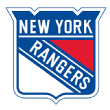
Jett Luchanko, F, Guelph (OHL)
There are a few things about Luchanko that should excite Rangers fans.
While he may be on the smaller side (listed at 5-10, 165 pounds), the Rangers are getting a skilled skater with high-end hockey sense and good puck skill. He isn’t dynamic, and scouts believe he lacks separating skill, but he has the tools to be a middle-six contributor. He’s a player who makes good decisions with the puck and is a reliable penalty killer. If his offensive game doesn’t translate, he’ll carve out a role as a bottom-six player.
